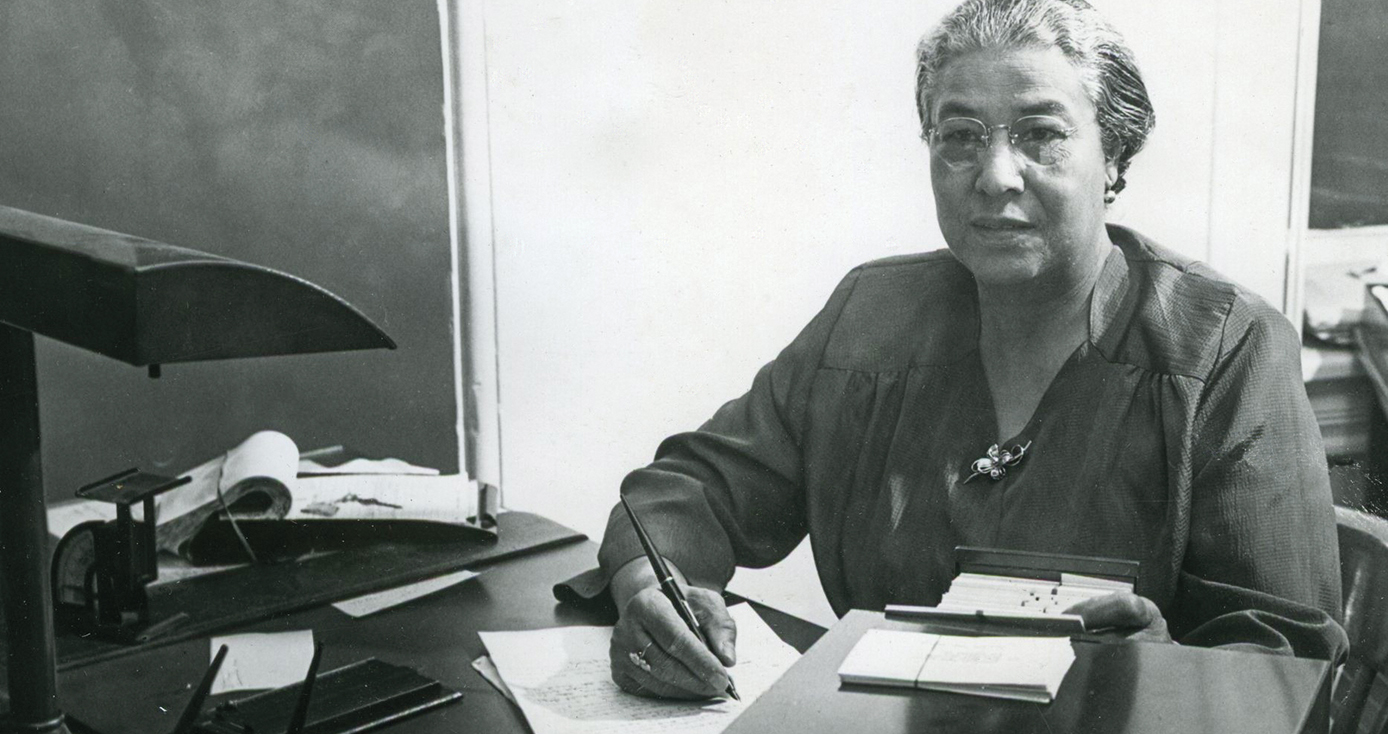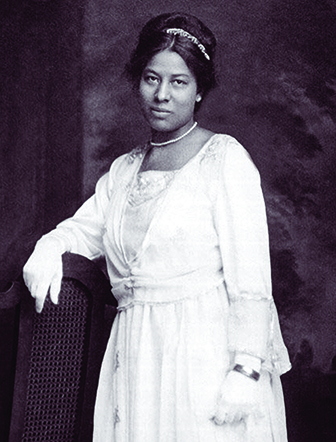
Subscribe to Pittwire Today
Get the most interesting and important stories from the University of Pittsburgh.The legacy of the first Black woman to graduate from Pitt Pharmacy lives on
In the 1916 edition of the University of Pittsburgh’s yearbook, “The Owl,” Ella P. Stewart’s inscription reads: “(She) can be distinguished by her wisdom. It would seem as if she could succeed in about anything undertaken, as there isn’t a study which seems to mystify her. She has the wishes of the entire crew for her success.”
Born Ella Nora Phillips in West Virginia in 1893, Stewart was admitted into Pitt’s School of Pharmacy in 1914 at age 21 under the name Mrs. Charles Myers, reflecting the name of her first husband. Despite a segregated setting, limited access to textbooks and cold reception, Stewart persisted in her studies and graduated with high marks, becoming the first Black woman to graduate from the school in 1916.
“She was a truly amazing woman. In fact, she was a truly amazing and accomplished human being. Her impact was enormous and was felt in the realm of civil rights and international diplomacy,” said current School of Pharmacy Dean Patricia Kroboth. “She faced adversity and lived up to the promise of that Owl yearbook statement.”
In addition to making history at Pitt, she also became the first licensed Black female pharmacist in Pennsylvania. She practiced in the nearby borough of Braddock, Pa.; Youngstown, Ohio; and Detroit. For her Youngstown stay, she became the first pharmacist at the Youngstown City Hospital.
However, much of Stewart’s legacy can be traced to the home above the pharmacy she and her second husband, Pitt pharmacy alumnus William Wyatt “Doc” Stewart (PHARM 1914), opened in Toledo, Ohio, in 1922.
The Stewarts’ apartment above that drugstore served as a meeting place for civic leaders to talk about Toledo’s problems, as well as a guesthouse for Black people barred from staying at hotels in the area because of their race. Notable guests included jazz musician Art Tatum, singer Marian Anderson and scholar W.E.B. Du Bois.
In 1948, a few years after selling the drugstore in Toledo, Stewart was elected president of the National Association for Colored Women’s Clubs, Inc., and later served as a delegate of the association at the International Council of Women of the World in Athens, Greece. During her time at the association, she promoted interracial understanding, engaged in charitable efforts and traveled far and wide on behalf of women’s clubs and other national organizations.
Other notable appointments included the National Advisory Committee on the White House Committee on Aging, the Women’s Advisory Committee on U.S. Defense Manpower by the U.S. Department of Labor, the Executive Board of the U.S. Commission of United Nations Educational, Scientific, and Cultural Organization (UNESCO) and goodwill ambassador for the U.S. Department of State. As an ambassador, she toured more than 20 nations, lecturing in such countries as India, Indonesia, Japan and China.
Stewart died on Nov. 27, 1987, in Toledo.
At Pitt, Stewart’s name lives on with the Ella P. Stewart Award, endowed to the Department of Biological Sciences in 1987. Each year, the award goes to a student beginning their first or second year. Stewart also received the Distinguished Alumni Award in 1969.
“The school has grown up so much since Ella’s time at Pitt,” Kroboth said. “We’re so proud that Ella graduated from the School of Pharmacy and later earned the Distinguished Alumni Award. She was a remarkable and accomplished human being.”
For soon-to-be Pitt Doctor of Pharmacy graduate Kathy Monangai, hearing the story of Stewart and her legacy “solidified” her decision to switch her field of study from chemistry to pharmacy in 2016.
“I felt like learning about Dr. Stewart was one of those moments for me that kept me pushing,” said Monangai, who is national vice president of the Student National Pharmaceutical Association. “Hearing about people like her makes me proud that I chose this path. She’s a true inspiration.”
Two of the association’s main goals are bringing pharmacy needs to underserved populations and bringing more people from underrepresented populations into pharmacy and other health care professions.
“When you introduce and empower those underrepresented groups, they could go into the field and increase the field’s diversity. We do a lot of those things that Dr. Stewart did,” Monangai said. “I hope that we can continue that legacy.”
This story is adapted from the University of Pittsburgh 2010 edition of Blue, Gold and Black.



